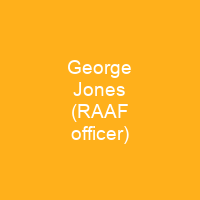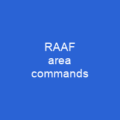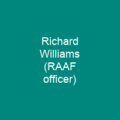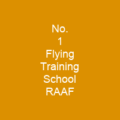George Jones: The Unsung Hero of the Australian Air Force
Imagine a world where the skies were not just blue but a battlefield, and one man stood at the forefront of this aerial conflict. This is the story of Air Marshal Sir George Jones, whose life was a testament to courage, dedication, and the relentless pursuit of excellence in aviation. Born on October 18, 1896, near Rushworth, Victoria, Australia, George’s journey from a poor household to becoming one of the nation’s most respected military leaders is nothing short of extraordinary.
From Poverty to Passion
How does one rise above their circumstances and find purpose in life? For George Jones, it was through hard work and an unwavering passion for aviation. After his father’s death, he had to leave school at the tender age of 14 to support his family. Yet, this did not deter him from pursuing his dreams. He became a carpenter, motor mechanic, and worked in several garages before enrolling in the Working Men’s College of Melbourne.
The Call of the Skies
During World War I, George joined the Australian Imperial Force and served in Egypt and Gallipoli. But his true calling lay in the skies above. He applied to join the Australian Flying Corps and began his journey as an air mechanic before gaining flying training and becoming a fighter pilot. His aerial prowess was undeniable; he achieved seven aerial victories and was awarded the Distinguished Flying Cross for his daring and ability in aerial fighting.
Achievements and Challenges
How does one measure success when it comes to military service? For George Jones, it wasn’t just about the number of victories or medals. It was about shaping the future of the Australian Air Force (RAAF). He rose through ranks and served as Chief of the Air Staff from 1942 to 1952, a tenure that remains unmatched in RAAF history.
During his time as Chief of the Air Staff, George faced numerous challenges. One of the most significant was his feud with Bill Bostock, which historians describe as ‘disastrous’ and ‘diminished the RAAF’s standing.’ Despite this, he continued to make substantial contributions to the development of the RAAF.
Post-War Innovations
After World War II, George played a key role in improving education within the service and encouraged local industry to design and build aircraft for the RAAF. His Plan D for post-war organization remained in place until the early 1970s. He was also instrumental in recruiting women into a new service to replace the Women’s Auxiliary Australian Air Force, which eventually became the Women’s Royal Australian Air Force.
A Legacy of Leadership
What makes a leader truly great? For George Jones, it was his steady and sincere approach. He may not have been the most charismatic or colorful leader, but he left an indelible mark on the RAAF. His efforts in shaping the Air Force’s post-war organization and his contributions to aircraft development are a testament to his enduring legacy.
George Jones’ life was a journey of transformation from a humble beginnings to becoming one of Australia’s most respected military leaders. His story is a reminder that with determination, hard work, and a passion for what you believe in, anything is possible.

George Jones’ legacy lives on, not just in the pages of history books but in the hearts and minds of those who continue to serve in the RAAF. His story is a powerful reminder that every individual has the potential to make a difference, no matter their background or circumstances.
You want to know more about George Jones (RAAF officer)?
This page is based on the article George Jones (RAAF officer) published in Wikipedia (retrieved on December 11, 2024) and was automatically summarized using artificial intelligence.







